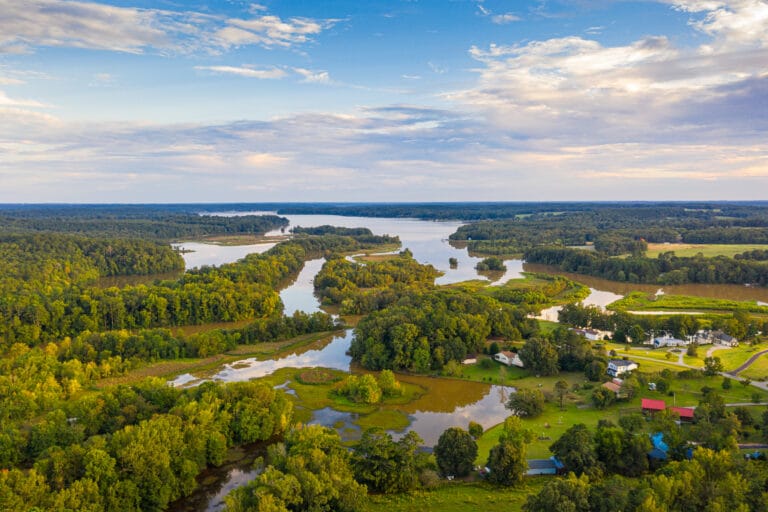Many people, who buy rural land, use it for wildlife management or for simply, relaxation. Until now most of these landowners had no intention of raising cattle, but they may be changing their minds. Cattle are selling for unusually high prices and cattle ranchers are making money. These conditions promote incentives for people to enter the cattle business. It is recommended, however, that landowners don’t buy cattle without first studying the business. It would be wise to thoroughly explore the question, “Should I get into the cattle business?”
The ideas presented in this article were adapted from a presentation given several times by Drs. Rick Machen and Ron Gill during annual Texas A&M Beef Cattle Short Courses. Machen and Gill are livestock specialists with Texas A&M AgriLife Extension Service. The title of their presentation is Retiring to Ranching.
Communication is essential
If land was bought as a place to spend leisure time, conflicts of interests may develop by entering the cattle business. There is always something to be done on a beef cattle ranch – stock to tend, water to check, and fence to mend or build. Property owners need to enter ranching with eyes wide open and have a plan to balance ranch responsibilities with dreams of leisure. Ranching can be strenuous and require a substantial amount of hours; so we should make sure we have the physical health, energy and time to manage a cattle business.
It is critically important that we share the same or parallel goals with our spouse, not only for the ranch, but also for life off the property as well. Fishing and shopping may not conflict. A ten-day cruise and heifer calving season are conflicting opportunities.
The long term goals of cattle production require continual effort and a passion. We need to understand the aspirations and intentions of the children and grandchildren. Are we beginning a family ranching heritage by buying cattle? Do subsequent generations share the same vision and desires?
Clearly establish and outline goals
Ranch goals should be specific, measurable, attainable and related. Goals are a vison of where we want to go. Some ranching and natural resource management goals may take more than one generation to achieve, so it’s important for families to share ranch management plans and ensure that everyone is on the same page.
In writing goals, the following questions should be addressed:
- How much land and cattle do I need?
- How much can I realistically care for?
- Is stewardship of natural resources important? (Natural resources are not immune to the effects of man and beast – maintenance and improvement of these resources require effort.)
- What type of cattle business do I want – cow/calf or stockers?
- Do I have a preferred breed of cattle in mind?
- Am I willing to consider livestock best suited to my ranch environment?
- Am I minimizing property tax burden by raising cattle?
- Financial Considerations
Ranchers across Texas, New Mexico and Oklahoma reported through the Standardized Performance Analysis database that average annual cost to maintain a cow is well above $500. In 2013, the average cost for quality young replacement females was above $1,000 per head. Bulls from reputable breeders was $2,500 and up. Getting into or staying in the beef cattle business requires significant capital.
Clearly define “profitable” and “tolerable”. Hopefully, there is non-ranch income to cover living expenses. Profitable is income exceeding expense. Tolerable may be generating enough revenue to cover all or most of the production costs. Due to land value appreciation and reduced debt on cattle loans (if cattle purchase was financed), net worth accumulates with time.
Regardless of the approach taken, it is critically important to establish a budget and adhere to that budget. Any variation from original projections creates the need for communication with family. Variations may seem small and not worthy of reevaluation of goals and objectives, but small shifts in management plans can lead to long-term changes in cash flow and draw on non-ranch funds.
Money is a personal matter; however, an annual review with a financial professional to monitor status of available capital, operating funds and other ranch debt is time and effort well spent. Examples of financial professionals are accountants, financial advisers and loan officers.
Lending cooperatives affiliated with the Farm Credit System are an excellent source of financing for rural Texans and agriculture ventures. In addition to available credit, most have a staff of lending professionals that are personally involved in and thereby understand agriculture.
Required equipment and facilities
People in ranching often fall victim to hardware disease. This condition typically manifests itself in recognizable colors – yellow, green, blue, red and white. To the unsuspecting eye it looks like a bulldozer, backhoe, tractor with loader, skid steer, UTV, welder, stock trailer and 4 wheeler all tucked neatly inside a new barn located conveniently adjacent to a set of corrals made from steel pipe.
If non-ranch income is available for acquisition and support of these items, all is well. We should be reminded of the words of wisdom from Mr. Frank Litterst, cattleman and longtime animal science teacher at Texas A&M, “Never buy what you can rent or lease. Never rent or lease what you can borrow.”
Borrowing must be a two-way street. If we borrow equipment, we must offer to lend equipment as payment. A short list of items required for beef cattle ranching is presented below.
Helpful reosurces
Before deciding whether to go into the cattle business, gather as much information as possible. A trustworthy, knowledgeable source of information is a valuable asset.
The best source for help is a successful neighbor, but successful is a subjective term. If neighbors have managed their ranch for two decades or more, through at least one drought, and the appearance of their ranch and livestock are appealing, they qualify as a good information source.
Local county agricultural extension agents are professional educators and provide a window to a vast array of information and resources. If they don’t know the answer, they can find someone who does.
US Department of Agriculture Natural Resources Conservation Service (USDA-NRCS) is federally funded and works with landowners in conservation planning and assistance. With service centers in most Texas counties, natural resource management information is not far away.
Find a local veterinarian with interest and expertise in large animals and involve them in development of a preventative herd health plan. There is no substitute for their knowledge.
As more transition to ranching from other careers and agriculture becomes more technical, professional consultants are becoming more available and are an excellent choice for one-on-one personal attention. Be prepared to compensate them for their knowledge and skills.
The annual Texas A&M Beef Cattle Short Course provides a great opportunity to obtain a huge amount of information on cattle production within a 2½ day period. Discussions are led by experts in every facet of the business.
Do not rely on information from the internet or what someone tells you as the truth until you substantiate the credibility and expertise of the source.
Cattle management
Another important question to answer is: “What type of cattle business do I want to enter?” Stockers are calves bought after they are weaned, fattened primarily on grass and then sold to feedyards. Stockers are a good option if an operator wants to buy and sell cattle on a 60- to 90-day rotation. Before buying stocker cattle, visit with local cattle marketing professionals regarding market conditions, source and availability of cattle, and marketing options.
When most people think of ranching, they envision a cow-calf operation with cows having calves once a year, growing those calves for six to eight months and then weaning calves as they go to market. An immediate question to consider is replacement females. Will they be raised or purchased? For 1/1/1 operations (one herd, one bull, one pasture), purchasing replacement females makes sense. Purchasing removes the difficulty of managing heifers and inbreeding concerns due to breeding females back to their sire. Ranchers who can pasture and manage heifers separately may not be comfortable monitoring and managing the animals during calving. They might choose to purchase replacement females which have already calved at least once.
The greatest challenge for beef producers, whether cow-calf or stockers is sustaining quantity and quality of forage required to meet maintenance and growth requirements of their cattle. The ongoing drought in some areas serves as a vivid reminder of this challenge.
Although consumers now take safety and wholesomeness of their food for granted, they are concerned about where and how food is produced. Animal welfare is a big issue. Whooping and hollering when working cattle can no longer be tolerated and must be replaced with low-stress handling techniques.
One final comment is offered to those who want to go into the cattle business. There is no room for unruly cattle with a poor disposition, regardless of their name, genealogy, genetic merit or perceived value. You have worked too long and hard to have your dream interrupted by an avoidable injury or disability.
Equipment required for beef cattle ranching
Perimeter Fence
- Good fences make for good neighbors.
- Bare minimum is five strands of barbed wire.
- Place bottom wire not more than 10 inches above the ground and top wire at least four feet from the ground.
- Net or woven wire offers the opportunity to better manage feral hogs and predators.
- Internal or Partition Fencing
- Use existing fences when possible.
- If replacement fencing is warranted, seek the assistance of NRCS or others with grazing management and livestock handling experience.
Barn/Storage
- Many old barns add an aesthetic element to the ranch and continue to serve the purpose of protecting equipment and supplies.
- Metal buildings are a low cost replacement option.
- Retired cargo containers are also a popular choice.
Handling Facility
- Use existing facilities as much as possible.
- If repairs or replacement is warranted, consider portable panels/pens before digging holes, cementing posts and welding pipe.
- For security reasons, do not locate pens near a public road.
Restraining Chute
- A squeeze chute is almost a must.
- Manual chutes are equally functional but appreciably less expensive than hydraulic.
Scales
- Knowing the correct weight versus guessing is critically important for dosage of most health products, nutrient requirements, and knowing what your cattle weigh when they leave the ranch for market.
- Smaller operations may not be able to justify owning a scale, but it is important to know what your cattle weigh.
Livestock Trailer
- Frequency of use determines justification for ownership.
- Most cattle auction companies pick up cattle for a nominal hauling charge or know local people who haul cattle on a load basis.



